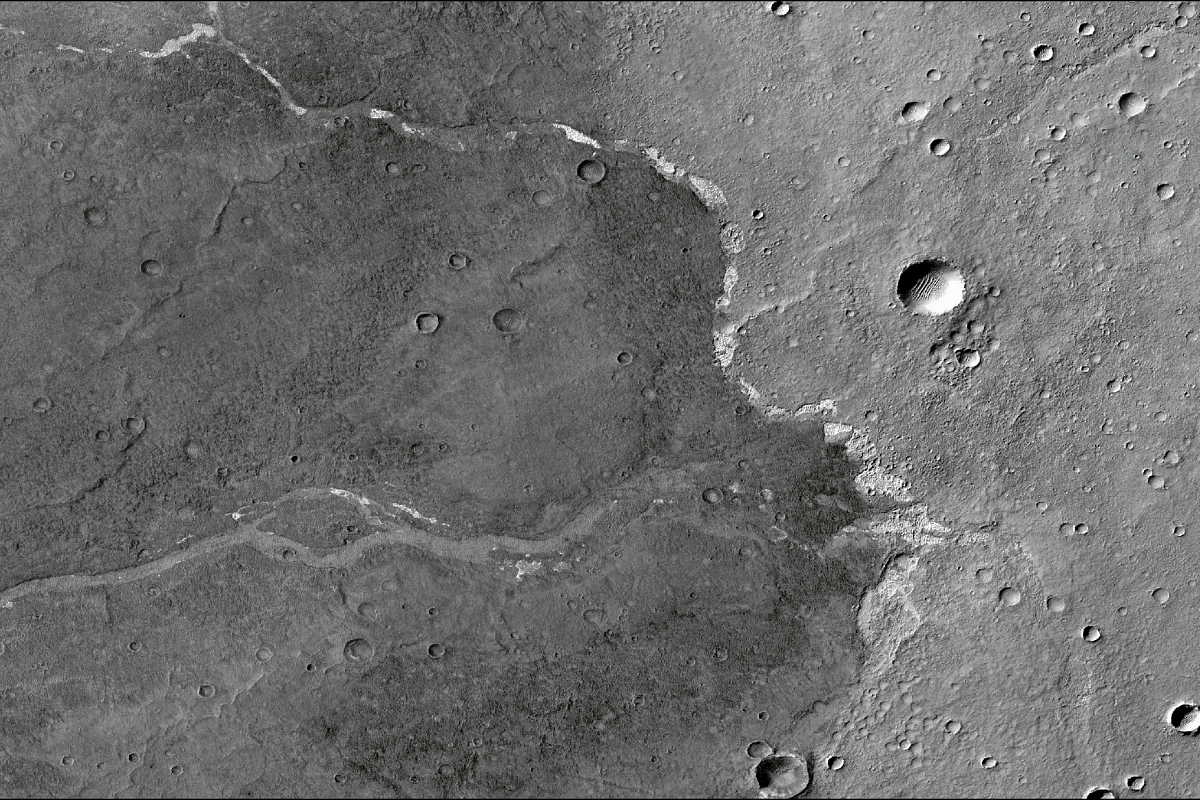Science
Liquid Water Existed On Mars About A Billion Years Longer Than Previously Thought
- It’s commonly believed that water on Mars evaporated about three billion years ago.
- A new finding revises that timeline to a more recent period.

MRO's view of salt deposits in Bosporos Planum, Mars. (Photo: NASA/JPL-Caltech/MSSS)
Mars wore a very different look a long time ago — we are talking billions of years ago.
The Red Planet once hosted flowing and stationary water, completely unlike the arid and cold Mars of today. Scientists believed that the last bit of water evaporated off the surface of Mars about three billion years ago. But now, new research is squeezing the timeline.
It appears that as much as about a billion years must be shaved off the earlier estimate.
Using data from the Mars Reconnaissance Orbiter (MRO) of the National Aeronautics and Space Administration (NASA), researchers at the California Institute of Technology (Caltech), the United States, have determined that liquid water existed on Mars as recently as in the range of two to two and a half billion years ago.
The research, conducted by Ellen K Leask and Bethany L Ehlmann, was published in the AGU Advances journal on 27 December 2021. NASA and Caltech published the news on their websites on 26 January 2022.
Leask’s research was part of her doctoral work at Caltech. She has since moved to Johns Hopkins University's Applied Physics Laboratory for postdoctoral research. Ehlmann, Leask’s co-author, is a professor in the Division of Geological and Planetary Sciences at Caltech.
The central idea behind their study was to take stock of the salt minerals left behind after the evaporation of water on Mars. Chloride deposits on Mars tell us about the last surface water present there — this is because salts dissolve readily in water.
NASA's Mars Odyssey orbiter, launched in 2001, had discovered many sodium chloride (table salt) deposits in 2008. These deposits offered clues about Mars being wet at some point in its past. The MRO, launched four years after Odyssey, carried more advanced instruments on board and has been taking a closer look at the salts.
The two researchers, the Caltech report says, “analyzed the salt deposits, looking at what types of landforms they formed on and how they were deposited across the terrain.”
Data from the Compact Reconnaissance Imaging Spectrometer for Mars (CRISM) on the MRO was used to map the chloride salts on terrain marked by impact craters. Because of the presence of craters, the age of the terrain was able to be determined. Generally speaking: the fewer the craters, the younger the terrain. This helped put a time tag on the salts.
Thereafter, services of the MRO’s High Resolution Imaging Science Experiment and ConTeXt Camera were called upon for high-resolution image data to understand the context and morphology of deposits.
It turned out that the salt deposits were “surprisingly thin — less than 3 meters thick” and occurred in “topographical lows” or depressions. Surface water run-off, fed by the occasional melting of ice or permafrost, has been identified as the most likely water source rather than deep groundwater welling up to the surface.
The researchers found deposits on Martian volcanic terrain formed as recently as 2.3 billion years ago. This suggests that water was present through the Hesperian and into the Amazonian time periods on Mars.
“Taking into account our estimated ages and those of previous studies, we conclude that chloride deposits might have started to form in the Noachian, but the processes creating these deposits continued until at least the Early Amazonian ∼2.3 Ga,” the researchers write in their paper. The Amazonian period continues to this day.
According to NASA, “the salt deposits provide the first mineral evidence confirming the presence of liquid water.”
Any talk of water includes the implication of life, at least for Earth-beings. So, the new finding also raises the question of how long microbial life would have lived on Mars, if it ever did.
The study is likely to feed the to-do lists of future Mars missions, which may be interested in confirming the link between the chlorides and the evaporation of water.
NASA’s Perseverance rover is currently traversing Martian land with the aim of seeking signs of ancient life and collecting samples of rock and regolith for possible return to Earth. But it’s doing the rounds of terrain that is about a billion years older than where the salt deposits are studied.
Introducing ElectionsHQ + 50 Ground Reports Project
The 2024 elections might seem easy to guess, but there are some important questions that shouldn't be missed.
Do freebies still sway voters? Do people prioritise infrastructure when voting? How will Punjab vote?
The answers to these questions provide great insights into where we, as a country, are headed in the years to come.
Swarajya is starting a project with an aim to do 50 solid ground stories and a smart commentary service on WhatsApp, a one-of-a-kind. We'd love your support during this election season.
Click below to contribute.
Latest